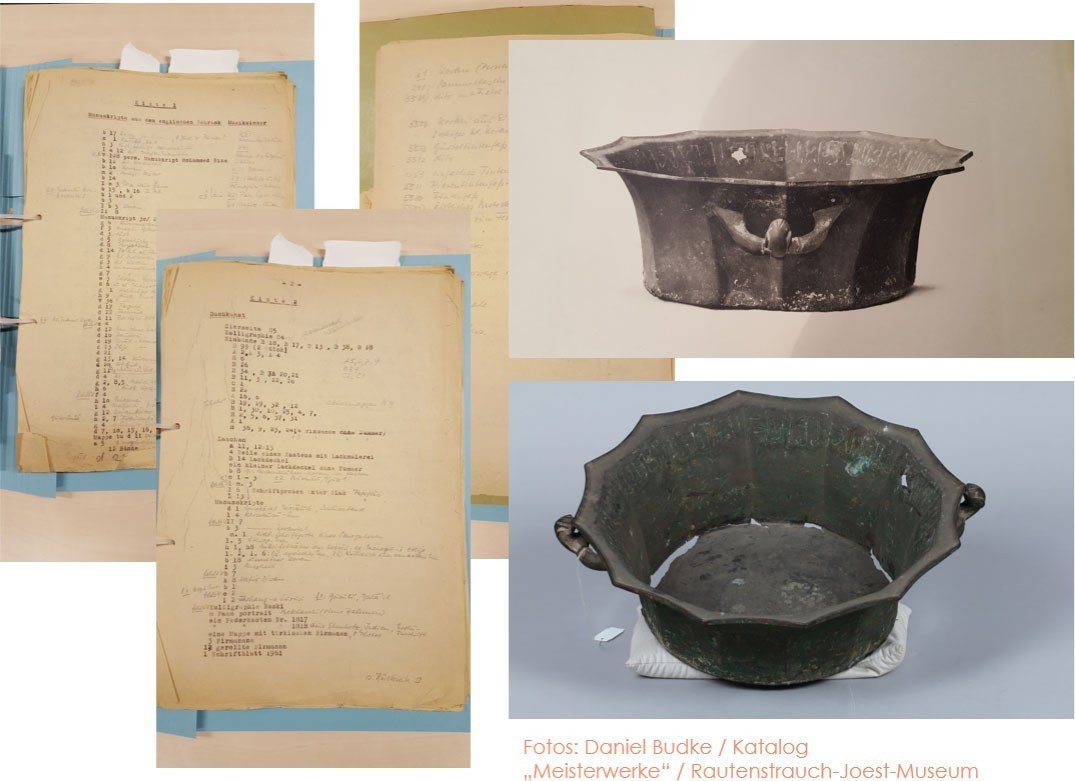Processing of the documentation of Max von Oppenheim's realien collection
Since 1991, the Rautenstrauch-Joest-Museum has housed Max von Oppenheim's (1860-1946) collection of real objects on permanent loan. The collection consists of approximately 1,600 objects that Oppenheim collected during his travels through North Africa and West Asia and during a 13-year stay as a diplomat in Cairo. It contains primarily art objects and ethnographica and is the surviving remnant of a collection that originally numbered about 8,000 objects, but was severely depleted during World War II. Much of the collection documentation was also lost. The surviving files and inventory lists have not yet been completely assigned to the preserved objects and evaluated.
The project therefore focuses on revising or restoring this assignment and on finding previously unknown information from the newly assigned sources. The data thus obtained will include, in particular, information on the circumstances of the acquisition of individual objects, their origin and use, and the chronology within the collection. In addition, the work is intended to provide a more comprehensive overview of the (past and present) scope of the collection and thus also of what has been lost.
The introduction of a new database system at the Rautenstrauch-Joest-Museum in the winter of 2020 offers the opportunity to review the objects from the Max von Oppenheim Collection that have so far been recorded only rudimentarily in a separately maintained database for permanent loans, to clean up inconsistencies and errors, and to add the newly gained knowledge.
In a new format and expanded by a great deal of information, the database can then serve as a starting point for further research projects (e.g. on provenance and colonialism). In addition, it will, of course, be the first point of contact for work in the museum itself, improve the handling of loan transactions, and be a building block for making data accessible to a larger public in the future.
Running time: 2020-2021
Project funding: Museumsgesellschaft RJM e.V.
Project staff: Daniel Budke
